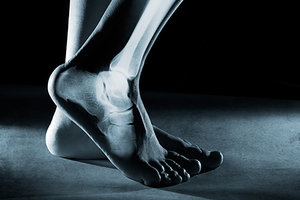Editor's Note: The following is the second of three case studies by Dr. Wong on conservative management of lower-extremity complaints. Article #1 (September issue) explored chiropractic management of patellofemoral arthralgia.
History & Subjective Complaints
The patient complains of general joint pain in the spine, upper and lower body, worsening over the past 10-12 months. Accompanying the pain has been increasing joint stiffness. The general medical practitioner she consulted one month ago took full-spine X-rays, examined her and also performed a bone density scan. She has generally been very healthy through her life with no major issues. The MD attributes her symptoms to advancing age and bad genetics.
Objective Findings & Vitals
The patient is a slightly overweight, Caucasian female, 75 years of age. She is a retired social worker for Contra Costa County, in the east San Francisco Bay area. Height: 5 ft. 7 in.; weight: 175 lbs.
Objective Orthopedic and Neurological Findings
Patient displays a slight forward lean while standing with anterior head carriage. There is a mild to moderate hyperkyphosis of the thoracic spine. Spinal ranges of motion in the cervical, thoracic and lumbosacral regions are limited by 5-15 percent in all directions.
Static palpation reveals mild hypertonicity of the paraspinal muscles from the neck to the lower back. Motion palpation is mildly restricted in the cervical, thoracic and lumbosacral spine. Orthopedic testing in general from the neck to the lower back is unremarkable, with some dull, achy pain and stiffness elicited. Mild neck, upper-back, mid-back and lower back pain. The neurologic exam reveals normal responses to dermatomes, myotomes, and deep tendon reflexes in the upper and lower body.
With posture and gait analysis, the right foot is flaring outward, worse on the right. The patient's Achilles tendons are bowing inward and the inner ankles are collapsing from the stress. Her feet have obvious signs of prolonged excessive pronation, as callouses, bunions and corns are present. Her X-ray results and bone density scores indicate osteoporosis, which appears to be widespread through her lower and upper body.
Radiology
 A-P and lateral lumbopelvic radiographs reveal reduced bone density with mild arthritic lipping and spurring on the L3-5 vertebral bodies and endplates. Lumbar disc spaces appear to be thinning at L3-4; L4-5; and L5-S1, with decreasing bone density.
A-P and lateral lumbopelvic radiographs reveal reduced bone density with mild arthritic lipping and spurring on the L3-5 vertebral bodies and endplates. Lumbar disc spaces appear to be thinning at L3-4; L4-5; and L5-S1, with decreasing bone density.
Clinical Impressions and Working Diagnosis
- Clinical osteoporosis
- Chronic overpronation of the feet
Treatment
- Physiotherapy modalities to reduce the muscle hypertonicity in areas which are particularly sore and stiff (i.e. laser, e-stim, heat)
- Gentle and slow flexion / traction (table) to take some compressive stress off the spine and promote general joint motion
- Adjustments of the spine, feet and lower / upper extremities
- Custom-molded foot orthotics to stabilize the pedal foundation and the rest of the body
- Exercises to promote posture, strength, movement, flexibility and balance
- Nutritional supplementation, including calcium, magnesium, etc.
- Ergonomic considerations for bending, twisting, reaching and performing daily activities
Discussion and Response to Care
Pronation and flat feet may not be the first thing we think of when someone has osteoporosis. One of the primary recommendations I give is weight-bearing exercise. Among other things, weight-bearing activities promote calcium uptake into the bones and stimulate the formation of new bone.
Upward of 90 percent of the population, including those with osteoporosis, are excessively pronating. When the foot arches collapse, the foot drops downward and stresses the inner ankles; inwardly twists the tibia / femur; and creates stress clear up to the head / neck. The feet can't support body weight properly. This places pressure on the feet due to altered biomechanics, reducing blood flow, nerve sensation and proprioception.
All three arches of this 75-year-old patient's feet were flattened fairly equally. In order to help make sure her body weight was being distributed and supported well, I fit her with a pair of orthotic stabilizers. Her generalized joint, spinal pain and stiffness improved by 50 percent after the first two weeks. This progressed to an 80-85 percent reduction of her symptoms after one month. She keeps improving. She is able to perform weight-bearing exercises better than she has in years.
Dr. Kevin Wong, earned a BS in exercise physiology from the University of California – Davis and his DC degree from Palmer Chiropractic College West. He practices in Orinda, Calif., and serves the Lamorinda, Berkeley, Walnut Creek and many other East San Francisco Bay Area communities. He is an expert on foot analysis, walking and standing postures, and orthotics, and lectures nationwide on spinal and extremity adjusting.




